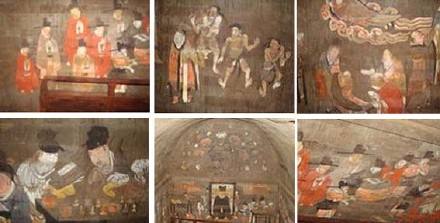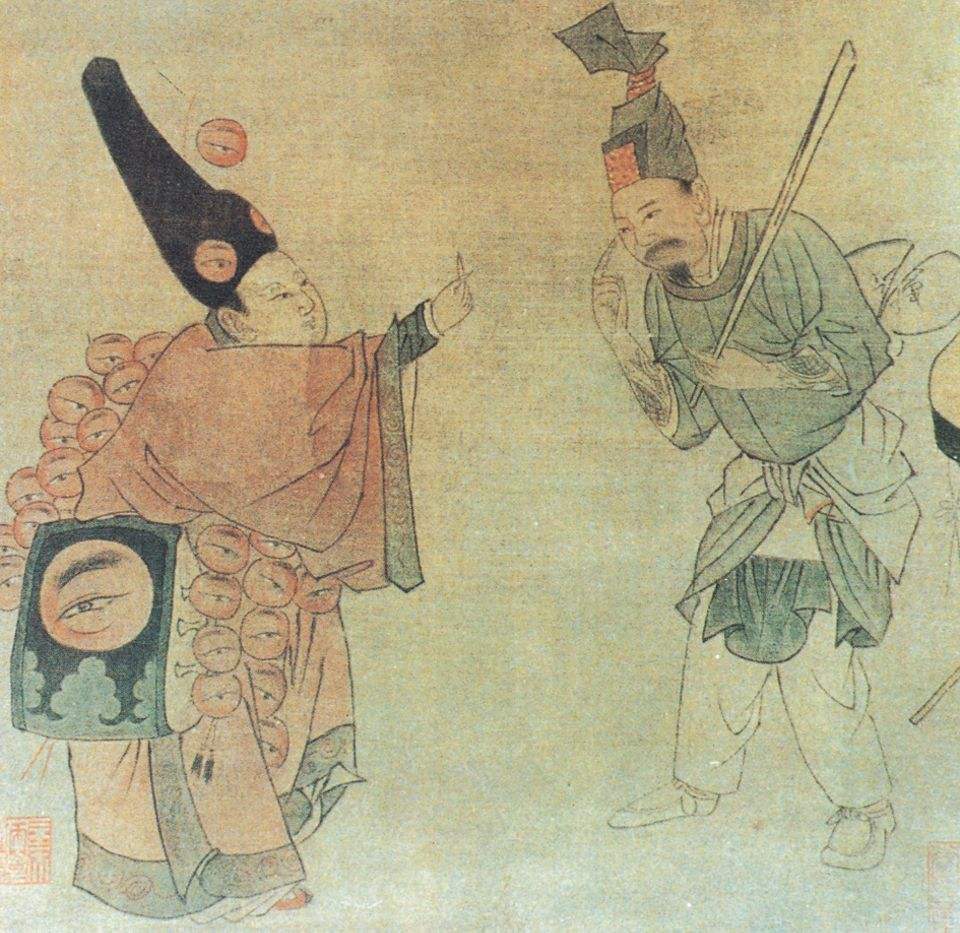From God-worshiping Dance and Song to Zaju of the Song and Jin dynasties
4 min readTraditional opera form sprouted from god-worshiping dance and song in the ancient times. By the Spring and Autumn period and the Warring States period, there were the so-called”you ren”actors. Since then it underwent a long term of evolution, through baixi of the Han dynasty, canjunxi of the Tang dynasty, zaju of the Song and Jin dynasties, nanxi of the Song and Yuan dynasties, zaju of the Yuan dynasties, tune system of the Ming and Qing dynasties, and finally has become an art treasure of the Chinese nation.

From God-worshiping Dance and Song to Zaju of the Song and Jin dynasties Today there remains the tradition of god-worshiping dance and song in China’s ethnic minority communities and remote mountainous areas. Nuo opera or Nuo drama, which survives in An’ hui, Hunan and Jiangxi provinces, is one of them. We often see in movies the scene of petition for rain accompanied with performances of singing and dancing. These are all the primitive forms of traditional opera.
In legends of ancient China, almost every tribe of remote antiquity had its own unique dancing and singing performance, such as Xian Chi during the reign of Huangdi (Yellow Emperor), Da Zhang during the reign of Emperor Yao and Da Shao in the reign of Emperor Shun. The scene of sacrificing to god and spirit with songs and dances is recorded in Jiu Ge(Nine Songs), the second chapter of Chu Ci (also known as Songsof the South or Songs of Chu).A1l the first seven chapters in Jiu Ge are all the poems devoted to shamans and spirits and sung by actors who acted as god or spirit.
These are the embryonic forms of traditional opera, which were not for entertainment, but for showing human being’s piety to god.
As rulers had more power and enjoyed more comfortable lives, they needed to have entertainment, and thus came with jesters who took various names of changyou, paiyou and lingyou, dwarf and nongren in the Pre-Qin period. Jesters, who served to tease people with their wits and humors, were very popular among the nobles in the Springand Autumn period and the Warring States period. By the Qin and Han dynasties, there emerged wrestling play, also known as baixi, which mixed the elements of dances, athletics, acrobatics and drama to offer performance for the nobles at banquet. In the tombs of Han unearthed so far, many have drawings about the contents of baixi, which gradually developed into a drama of full plot. For example, Huanggong of East Sea recorded in Western Capital Miscellany is already a complete performance.
By the Tang dynasty, the performance of baixi was richer in contents.
Nongcanjun, also known as canjunxi, was the most representative in the Tang dynasty.
Ta Yao Niang was the most famous play in the Tang dynasty. It tells that a beautiful young lady in the Northern Qi dynasty is always beaten by her drunken husband. She can do nothing but complain to her neighbors. In the performance, an actor dressed in women clothing sings while walking with his feet making rhythm. Spectators in around sing along. When the husband comes to the stage, they then pretend to fight with each other to tease the audience. This play has plot with singing, reciting, dance-acting and combating, so it is very close to mature opera. During the Northern and Southern Song dynasties, the urban economy witnessed great development with more people settling down in town, so there were often opera performances in washe and goulan.

According to the records of the Song dynasty, usually there were opera performances during festivals, folk entertainments, religious rites, ceremonies and commercial sales. Zaju of the Song dynasty developed from canjunxi of the Tang dynasty. It is a kind of short performance with four or five actors. Most part of the show is dialogue, with certain dances. The melody is largely daqu (grand pieceof song and dance). The show includes three parts: the main part is complicated in content with comic style. Before the main part starts, there is a small performance called yanduan, which is about the daily hassles among neighbors. Then after that the main part concludes, there is zaban which is very teasing and amusing. The threeparts are separated with each other with fixed arrangement of melodies which shows that the performance is not mature opera yet. As there are no play scripts left over for zaju, we can only get some idea of it from the notes of Song people.
Reminiscence of Martial Arts Circles records the names of some of the plays. Thappearance of scripts elevated traditional opera out of the primitive stage of impromptu performance.








